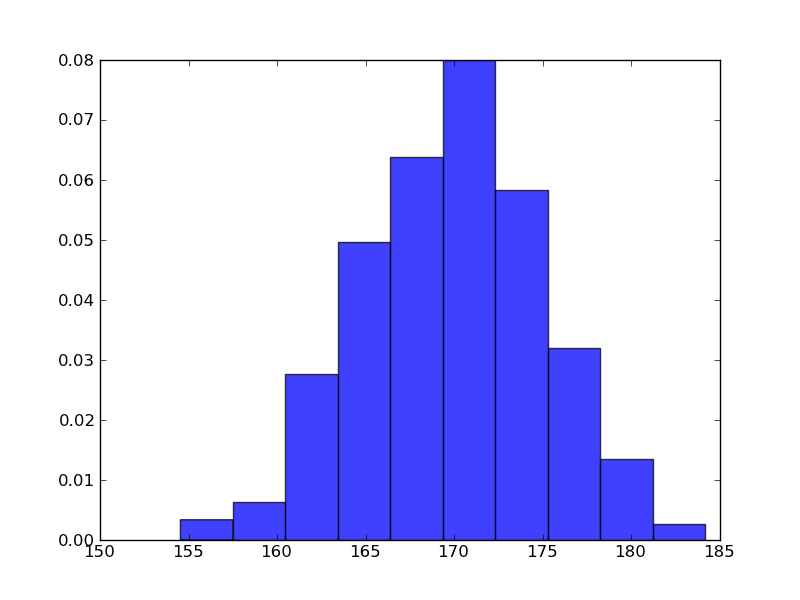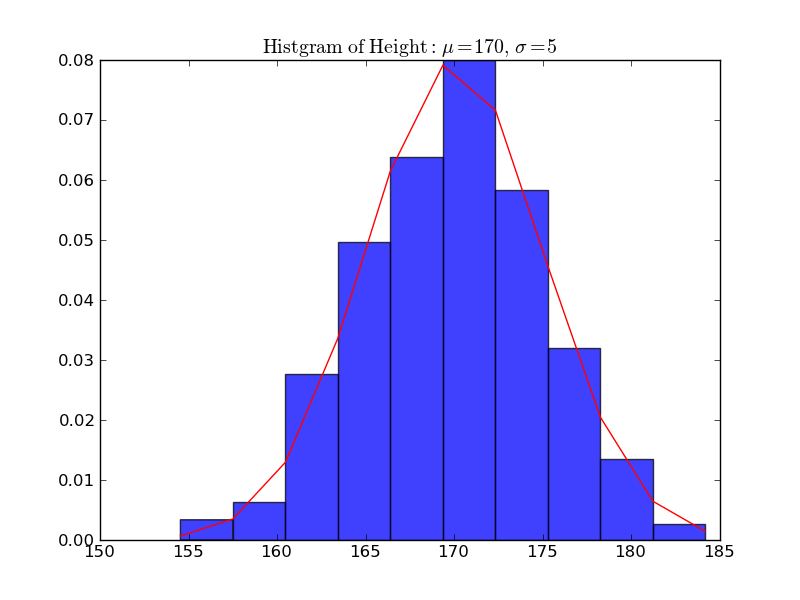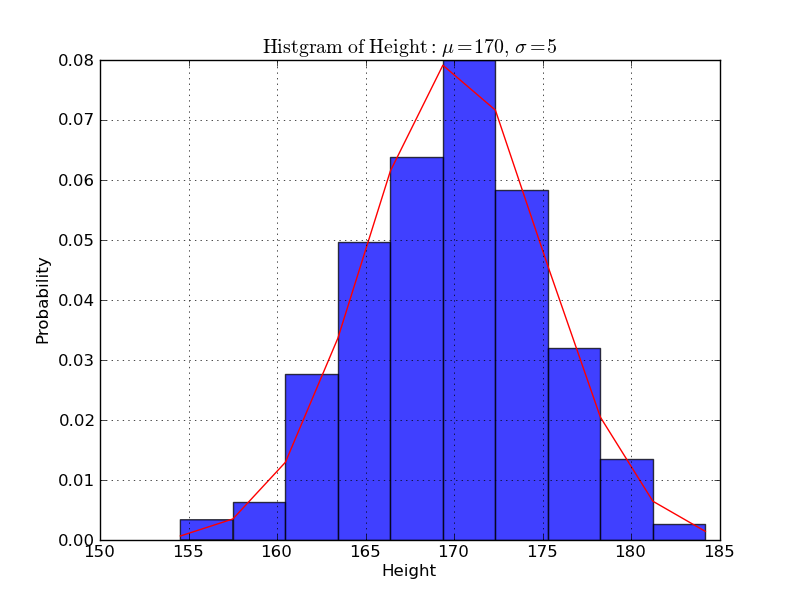「機械学習 はじめよう」http://gihyo.jp/dev/serial/01/machine-learning/ より
第6回 Numpyの導入
In [1]: import numpy In [2]: numpy.test() Running unit tests for numpy NumPy version 2.0.0.dev-3b3735d NumPy is installed in /Library/Python/2.7/site-packages/numpy-2.0.0.dev_3b3735d_20111219-py2.7-macosx-10.7-x86_64.egg/numpy Python version 2.7.1 (r271:86832, Jun 25 2011, 05:09:01) [GCC 4.2.1 (Based on Apple Inc. build 5658) (LLVM build 2335.15.00)] nose version 1.1.2 ........(略) ---------------------------------------------------------------------- Ran 3422 tests in 18.146s OK (KNOWNFAIL=3, SKIP=5) Out[2]: <nose.result.TextTestResult run=3422 errors=0 failures=0>
In [1]: import numpy as np
In [2]: np.version.version
Out[2]: '2.0.0.dev-3b3735d'
In [3]: np.lookfor('array')
Search results for 'array'
--------------------------
numpy.array
Create an array.
numpy.asarray
Convert the input to an array.
numpy.ndarray
ndarray(shape, dtype=float, buffer=None, offset=0,
...
array()
In [4]: a = np.array([1,2,3,4,5])
In [5]: b = np.array([[1.,0.,0.],[0.,1.,0.],[0.,0.,1.]])
In [6]: a
Out[6]: array([1, 2, 3, 4, 5])
In [7]: b
Out[7]:
array([[ 1., 0., 0.],
[ 0., 1., 0.],
[ 0., 0., 1.]])
In [8]: a.dtype
Out[8]: dtype('int64')
In [9]: b.dtype
Out[9]: dtype('float64')
In [10]: a = np.array([1,2,3,4,5],dtype=float)
In [11]: a
Out[11]: array([ 1., 2., 3., 4., 5.])
In [12]: a.dtype
Out[12]: dtype('float64')
In [13]: a = np.arange(0.0, 10.0, 0.1)
In [14]: a
Out[14]:
array([ 0. , 0.1, 0.2, 0.3, 0.4, 0.5, 0.6, 0.7, 0.8, 0.9, 1. ,
1.1, 1.2, 1.3, 1.4, 1.5, 1.6, 1.7, 1.8, 1.9, 2. , 2.1,
2.2, 2.3, 2.4, 2.5, 2.6, 2.7, 2.8, 2.9, 3. , 3.1, 3.2,
3.3, 3.4, 3.5, 3.6, 3.7, 3.8, 3.9, 4. , 4.1, 4.2, 4.3,
4.4, 4.5, 4.6, 4.7, 4.8, 4.9, 5. , 5.1, 5.2, 5.3, 5.4,
5.5, 5.6, 5.7, 5.8, 5.9, 6. , 6.1, 6.2, 6.3, 6.4, 6.5,
6.6, 6.7, 6.8, 6.9, 7. , 7.1, 7.2, 7.3, 7.4, 7.5, 7.6,
7.7, 7.8, 7.9, 8. , 8.1, 8.2, 8.3, 8.4, 8.5, 8.6, 8.7,
8.8, 8.9, 9. , 9.1, 9.2, 9.3, 9.4, 9.5, 9.6, 9.7, 9.8,
9.9])
In [15]: a[20:40]
Out[15]:
array([ 2. , 2.1, 2.2, 2.3, 2.4, 2.5, 2.6, 2.7, 2.8, 2.9, 3. ,
3.1, 3.2, 3.3, 3.4, 3.5, 3.6, 3.7, 3.8, 3.9])
In [16]: a[0:100:5]
Out[16]:
array([ 0. , 0.5, 1. , 1.5, 2. , 2.5, 3. , 3.5, 4. , 4.5, 5. ,
5.5, 6. , 6.5, 7. , 7.5, 8. , 8.5, 9. , 9.5])
In [17]: a = np.arange(16)
In [18]: a
Out[18]: array([ 0, 1, 2, 3, 4, 5, 6, 7, 8, 9, 10, 11, 12, 13, 14, 15])
In [19]: a.reshape(4,4)
Out[19]:
array([[ 0, 1, 2, 3],
[ 4, 5, 6, 7],
[ 8, 9, 10, 11],
[12, 13, 14, 15]])
In [20]: a
Out[20]: array([ 0, 1, 2, 3, 4, 5, 6, 7, 8, 9, 10, 11, 12, 13, 14, 15])
In [21]: np.ravel(a)
Out[21]: array([ 0, 1, 2, 3, 4, 5, 6, 7, 8, 9, 10, 11, 12, 13, 14, 15])
In [22]: a
Out[22]: array([ 0, 1, 2, 3, 4, 5, 6, 7, 8, 9, 10, 11, 12, 13, 14, 15])
In [23]: a = np.array([[1,2,3]]) In [24]: a + 2 Out[24]: array([[3, 4, 5]]) In [25]: a * 2.0 Out[25]: array([[ 2., 4., 6.]]) In [26]: b = np.array([[4,5,6]]) In [27]: a + b Out[27]: array([[5, 7, 9]]) In [28]: a * b Out[28]: array([[ 4, 10, 18]])
統計関連の操作
In [1]: import numpy as np
In [2]: height = np.random.randint(140, 190, 100)
In [3]: height
Out[3]:
array([182, 176, 189, 145, 184, 176, 160, 189, 151, 182, 155, 141, 156,
187, 161, 145, 143, 182, 153, 140, 149, 184, 181, 152, 163, 167,
149, 174, 167, 154, 169, 163, 177, 186, 154, 148, 152, 176, 188,
184, 157, 168, 178, 180, 140, 142, 152, 161, 181, 151, 172, 174,
170, 181, 184, 166, 163, 167, 170, 173, 173, 155, 142, 144, 148,
168, 179, 180, 147, 143, 157, 182, 171, 158, 184, 180, 149, 143,
168, 165, 145, 165, 158, 151, 173, 172, 173, 162, 166, 146, 160,
157, 161, 167, 158, 159, 161, 152, 161, 153])
In [4]: np.mean(height) ←平均値
Out[4]: 164.0
In [5]: np.median(height) ←中央値
Out[5]: 163.0
In [6]: np.std(height) ←標準偏差
Out[6]: 13.803622712896784
In [7]: np.sum(height) ←総和
Out[7]: 16400
In [8]: np.amax(height) ←最大値
Out[8]: 189
In [9]: np.amin(height) ←最小値
Out[9]: 140
その他
- 公式ドキュメント http://www.scipy.org/Numpy_Example_List#head-31c979932d848274e1a1d0c6a0b1ecdd18cfa1da
- Numpy/ScipyのCookBook http://www.scipy.org/Cookbook
第7回 代表的な離散型確率分布
身長のヒストグラム
In [1]: import matplotlib.mlab as mlab In [2]: import matplotlib.pyplot as plt In [3]: import numpy as np In [4]: sample = 1000 In [5]: mu, sigma = 170, 5 In [6]: data = np.random.normal(mu, sigma, sample) In [7]: n, bins, patches = plt.hist(data, normed=1, alpha=0.75, align='mid')

In [8]: y = mlab.normpdf(bins, mu, sigma) In [9]: l = plt.plot(bins, y, 'r-', linewidth=1)

In [10]: plt.title(r'$\mathrm{Histgram\ of\ Height:}\ \mu=%d,\ \sigma=%d$' % (mu, sigma))
Out[10]: <matplotlib.text.Text at 0x110695b50>

In [11]: plt.xlabel('Height')
Out[11]: <matplotlib.text.Text at 0x110686410>

In [12]: plt.ylabel('Probability')
Out[12]: <matplotlib.text.Text at 0x110689d90>

In [13]: plt.grid(True) In [14]: plt.show()
